Your search for a delicious homemade samosa recipe ends here! This recipe boasts a mouth-watering spicy potato filling that is guaranteed to satisfy your cravings. What's more, I'm providing all the essential tips, tricks, and troubleshooting techniques to help you achieve perfectly crispy and flaky samosas right in your own kitchen.
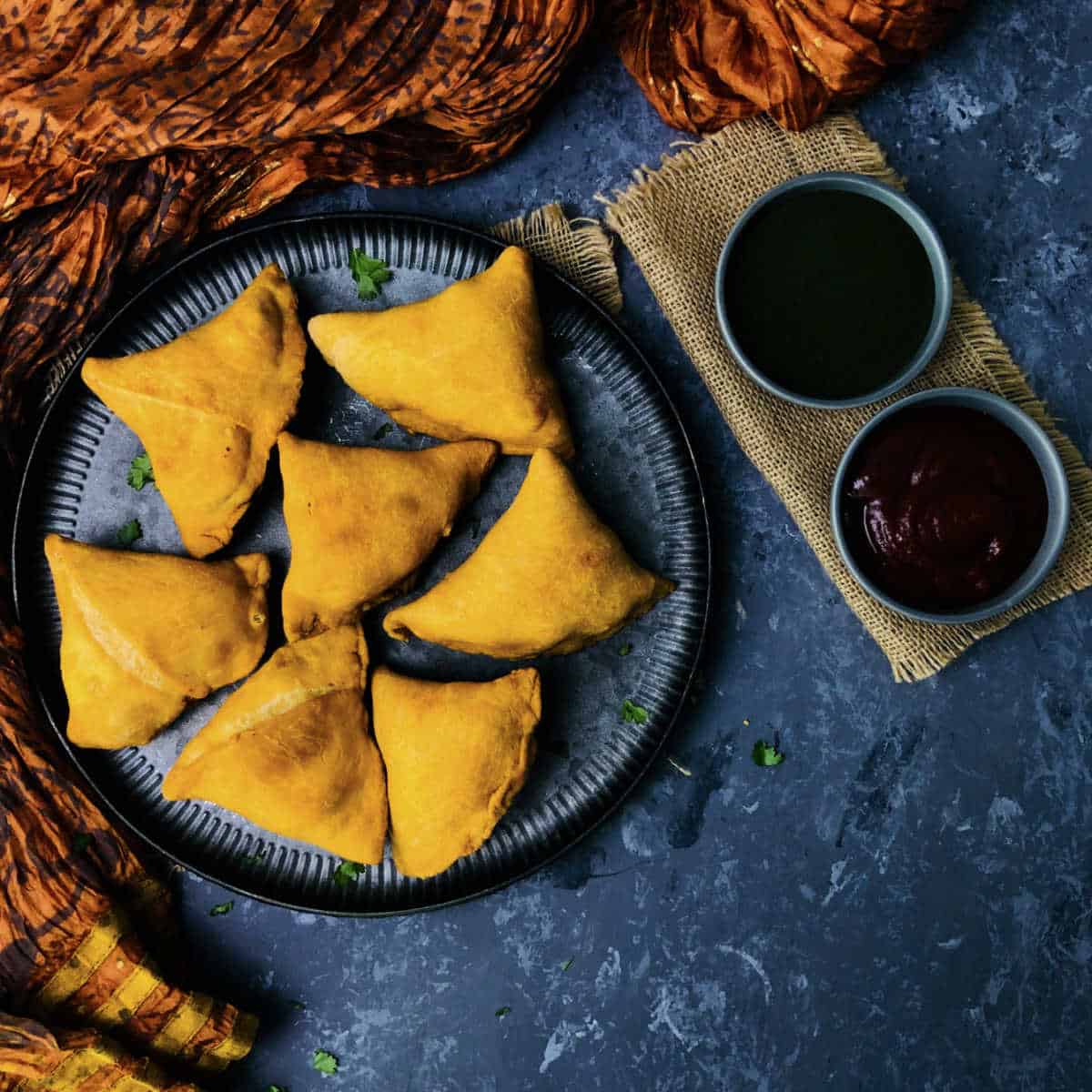
Samosas are beloved Indian snacks with a flaky pastry crust filled with spicy potato and pea mixture, widely enjoyed as snacks, appetizers, or meals. Their delicious flavor and versatility make them perfect for parties.
In addition to their incredible flavor, samosas are highly versatile and can be enjoyed in many ways. They make for a tasty snack, appetizer, or even a satisfying meal when paired with chickpea curry. Make these yummy, crowd-pleasing authentic samosas for your next party, gathering, or picnic, and serve them with mint chutney and sweet chutney.
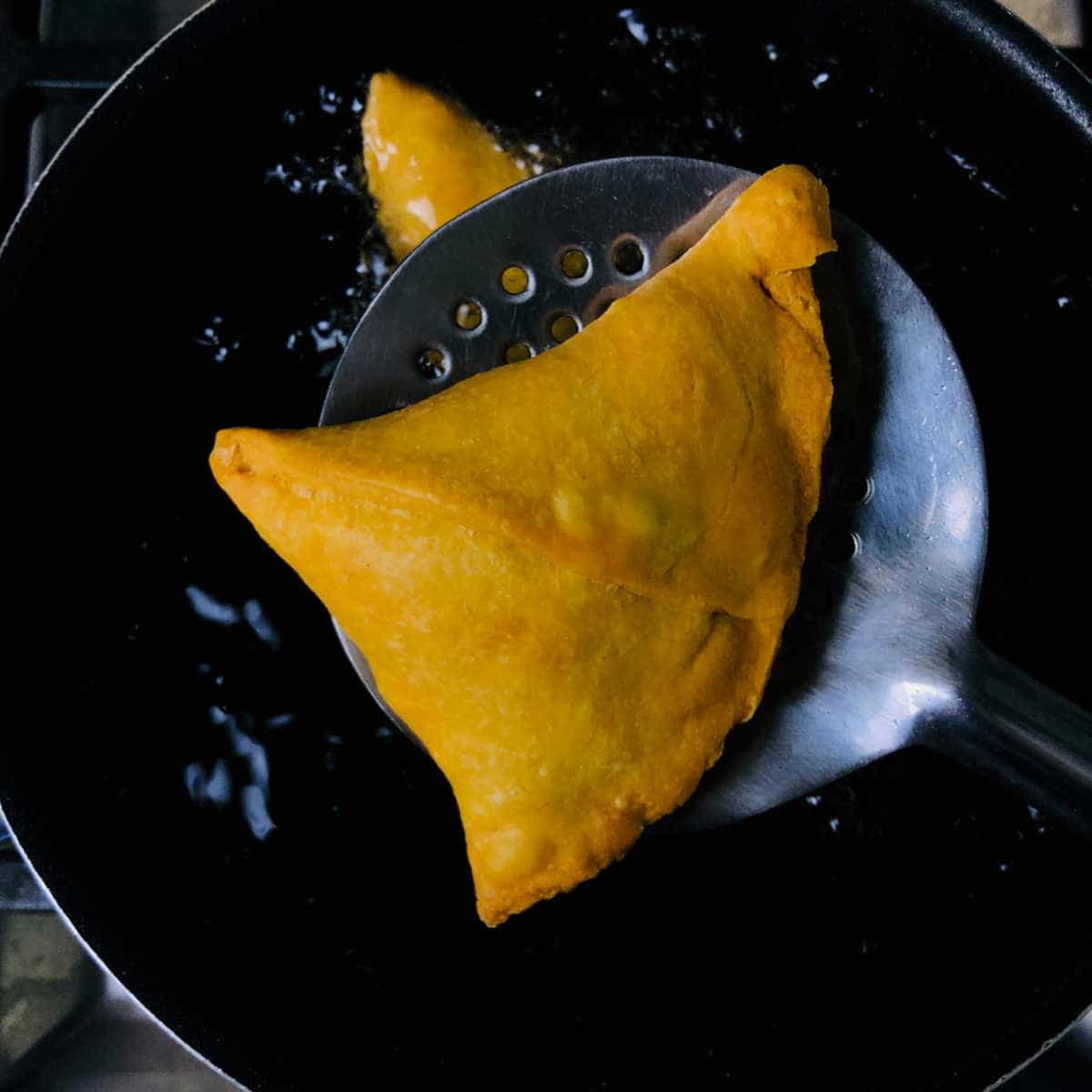
Why you will love this samosa recipe?
- This samosa recipe is sure to impress with its perfect balance of spices, yielding a flavor that is simply unbeatable.
- These homemade samosas boast a crispy, flaky texture that is truly irresistible.
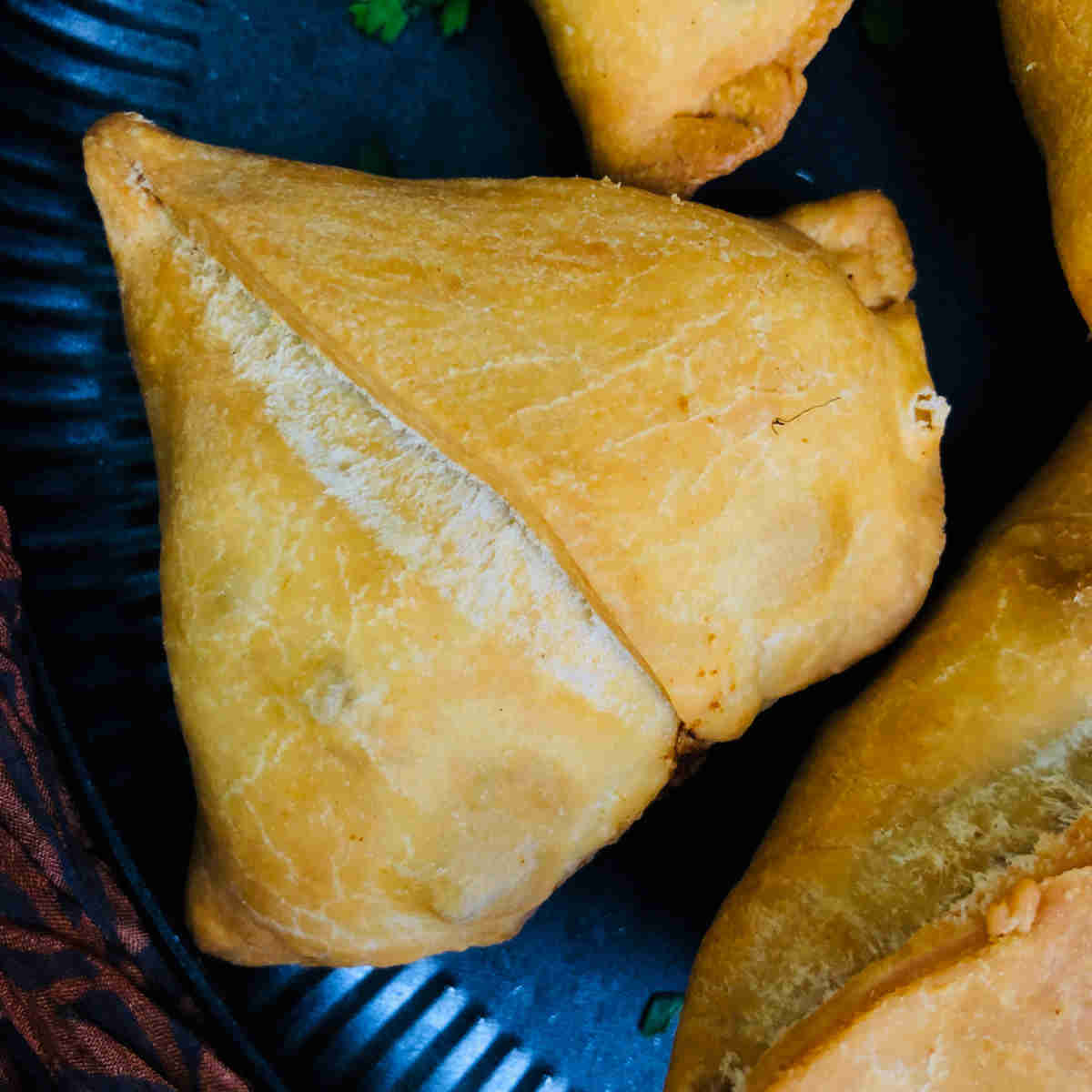
Ingredients
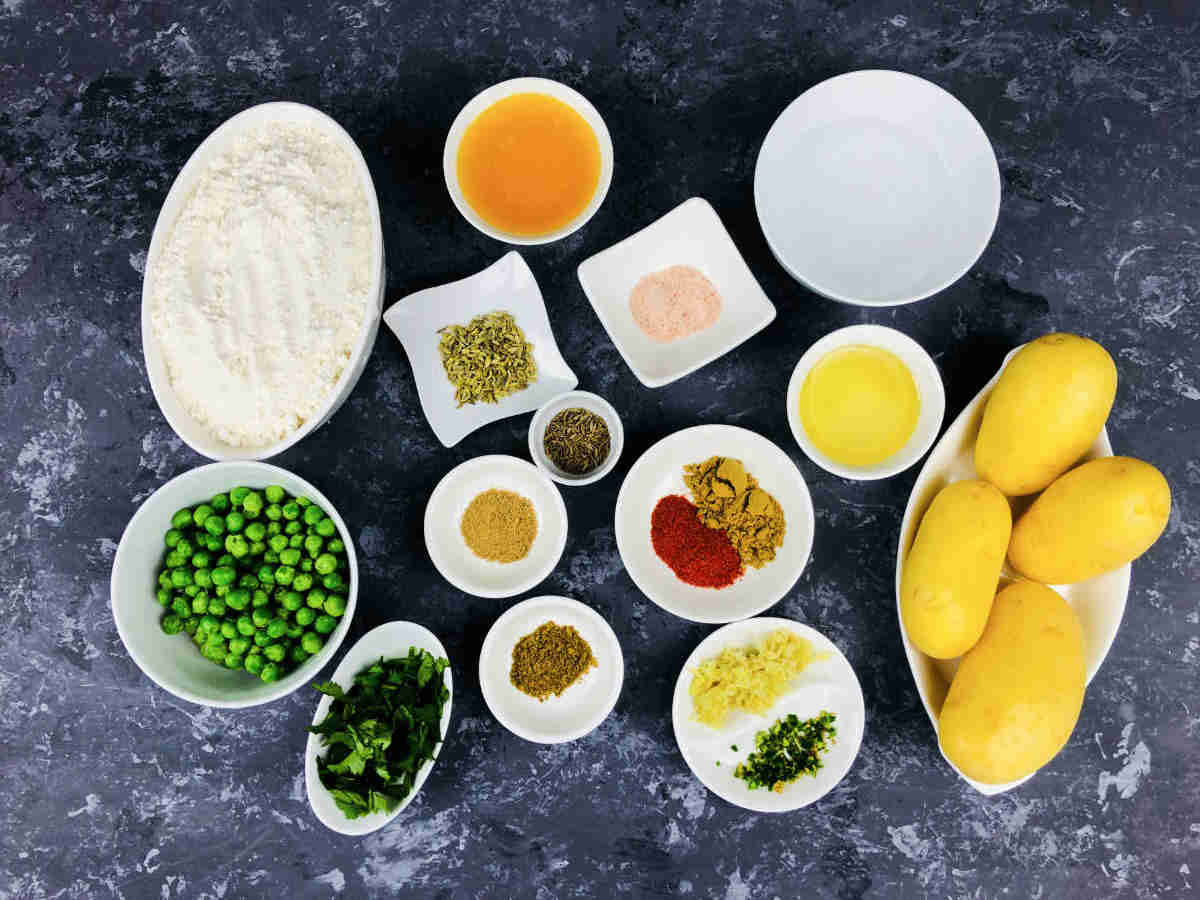
Flour: Use all-purpose flour to make the samosas.
Potatoes: I used 4 large potatoes (approximately 1 lb).
Ghee and oil: I use ghee to make the dough and sunflower oil for deep frying. For a vegan version, use oil instead of ghee in the dough.
See the recipe card for full information on ingredients and quantities.
Variations of this classic samosa recipe
- Singhara: A Bengali variation with a filling of potatoes, cauliflower, and peanuts, known for its spiciness. Singhara has other variations, too, like mangshor singhara (made with minced goat meat).
- Chole Samosa: Served with chickpea curry, creating a popular street food called samosa chaat.
- Other fillings: Many ingredients and seasonings are used, such as paneer, cauliflower, mushrooms, and onions. There are so many combinations that are commonly served as street food in food carts across India.
- Fusion: Variations like Chinese samosa with noodle or Maggi stuffing, cheese samosa, and even chocolate or jam-filled samosas.
- Other preparations: Bun samosa or samosa pav (a samosa stuffed between a pav bun or dinner roll and seasoned like vada pav), and samosa wrap.
Step-by-step instructions
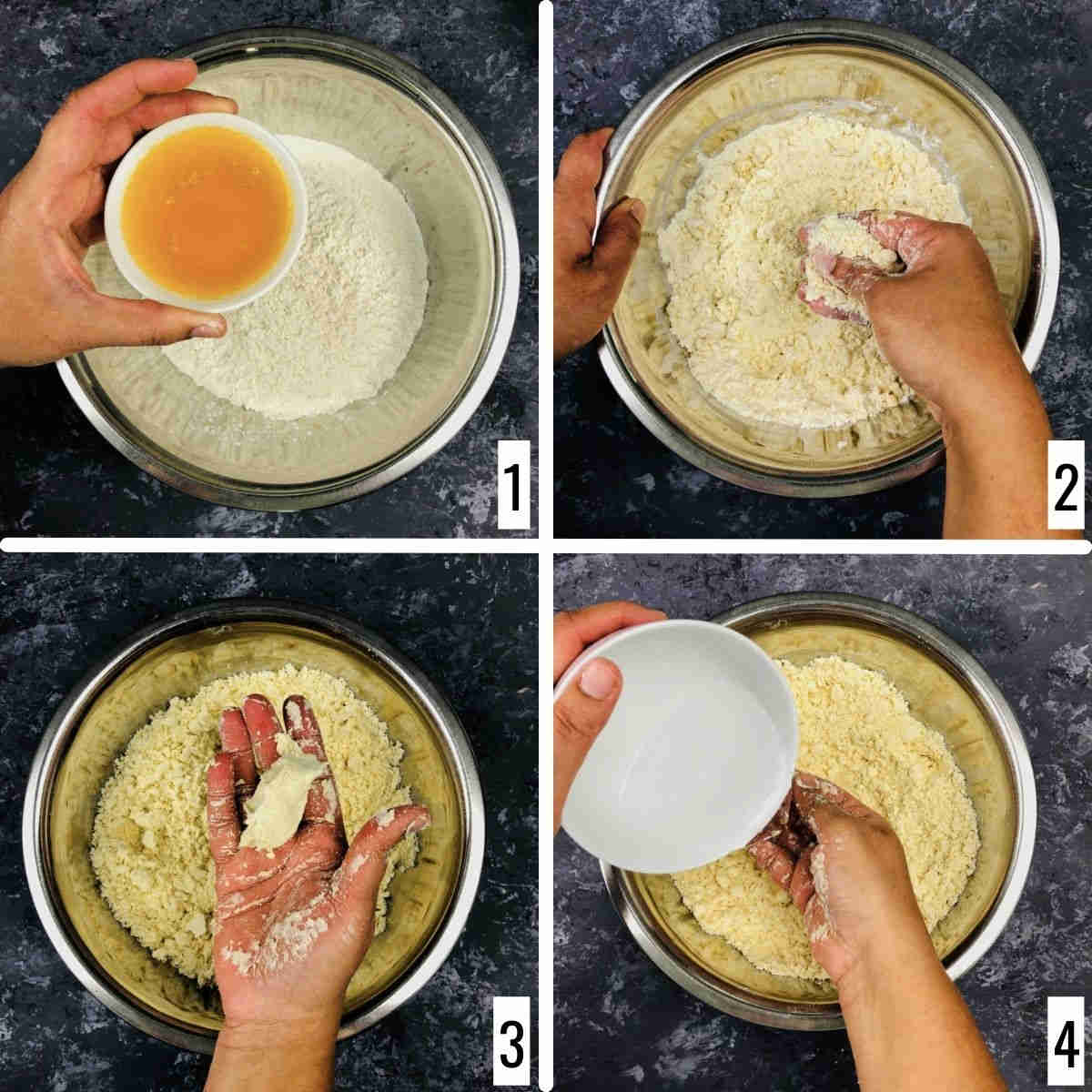
Step 1: Mix flour and salt in a large bowl. Add ghee or oil and mix well. Rub the ghee and flour together well for 3-5 minutes (images 1 and 2).
Step 2: To check if it is done, take some dough and press it in your fist. It should hold together without falling apart (image 3). Slowly add water and begin to knead (image 4).
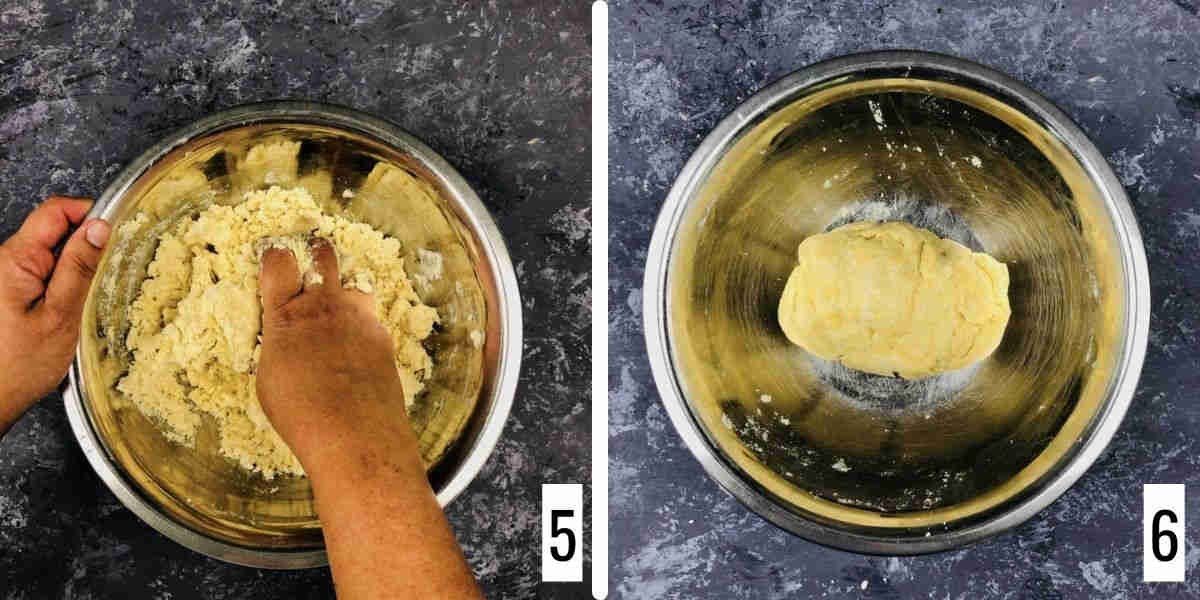
Step 3: Slowly add water and knead into a stiff dough. Cover with a damp cloth and let it rest for 30 minutes (images 5 and 6).
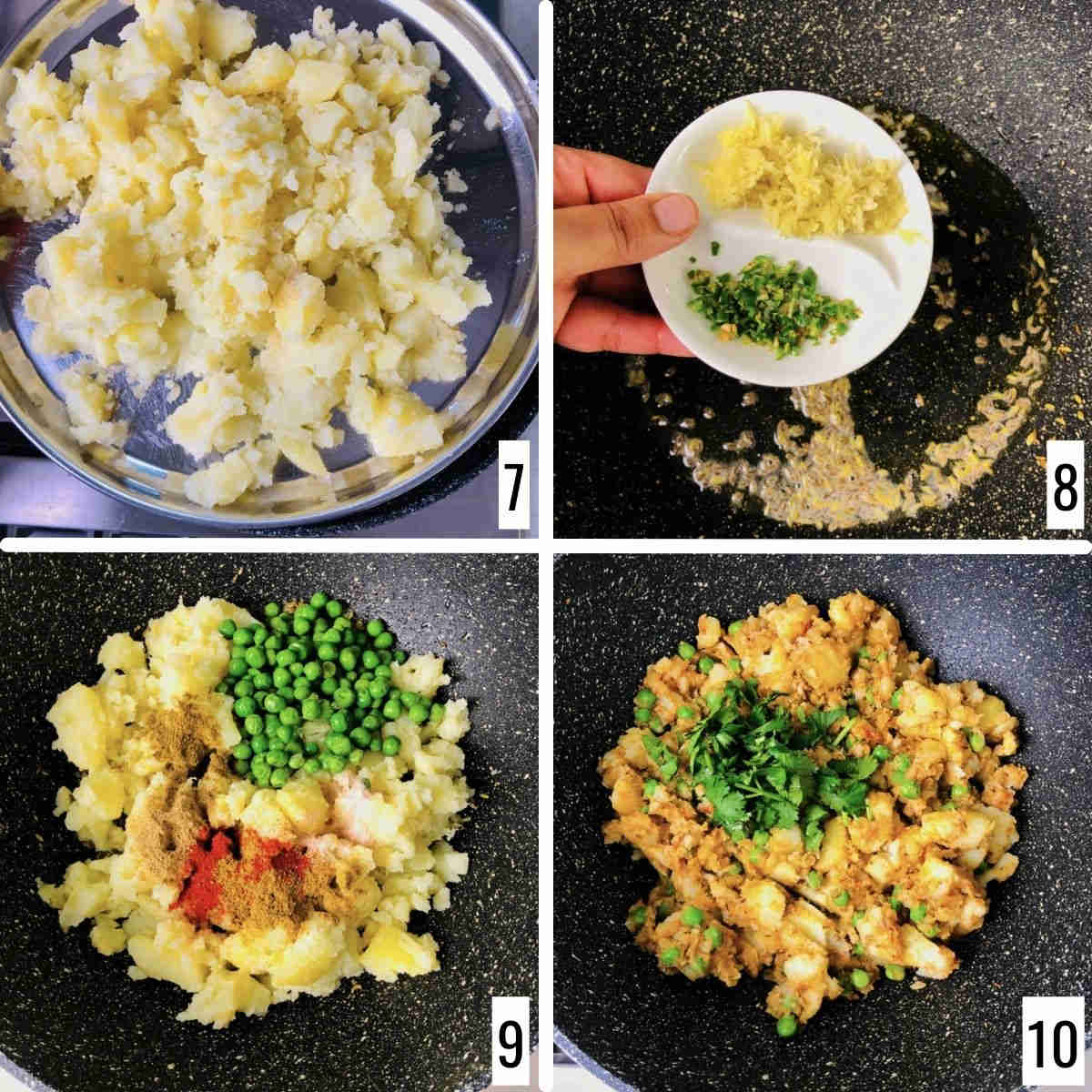
Step 4: Boil the potatoes until they are just done. Peel the skin and mash them lightly. Set them aside (image 7).
Step 5: Heat oil in a pan or kadhai. Add cumin seeds and fennel seeds. Once they splutter, add ginger and green chili, and saute for a few seconds (image 8).
Step 6: Add potato, green peas, ground coriander, red chili powder, garam masala, amchur, and salt. Mix well and add chopped cilantro (images 9 and 10).
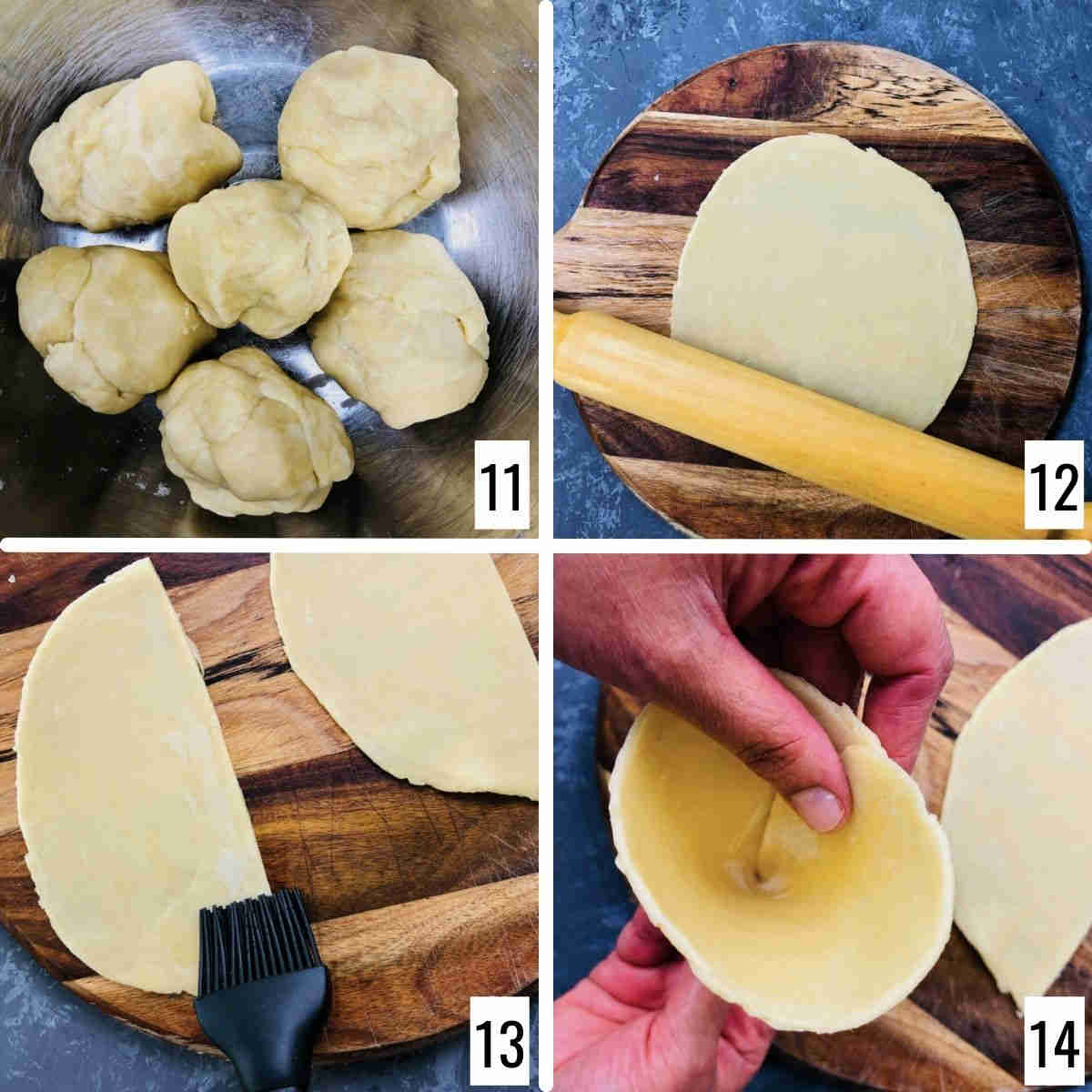
Step 7: Divide the samosa dough into six parts. Lightly grease the rolling surface with some oil and roll the dough into a slightly thick disc, approximately 8 inches (images 11 and 12).
Step 8: Cut it into two parts, making a semi-circle. Take one part and apply water at the straight edge. Bring the two corners together to form a cone (images 13 and 14).
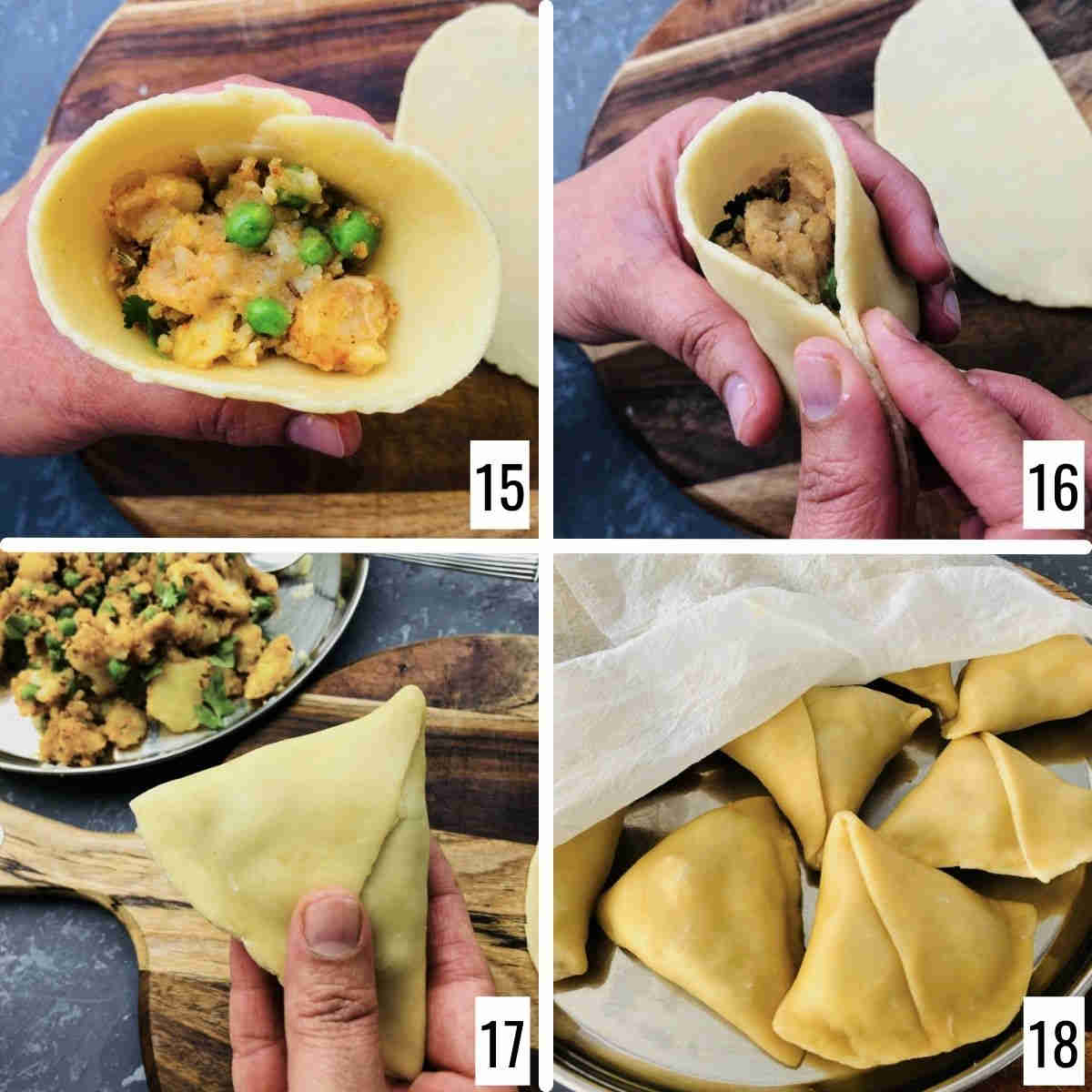
Step 9: Add approximately 2-3 tablespoons of filling to the cone. Press it lightly (image 15).
Step 10: Apply water to the edges. Seal the edges, making sure there is no gap (images 16 and 17).
Step 11: Repeat with the rest of the dough and filling (image 18).
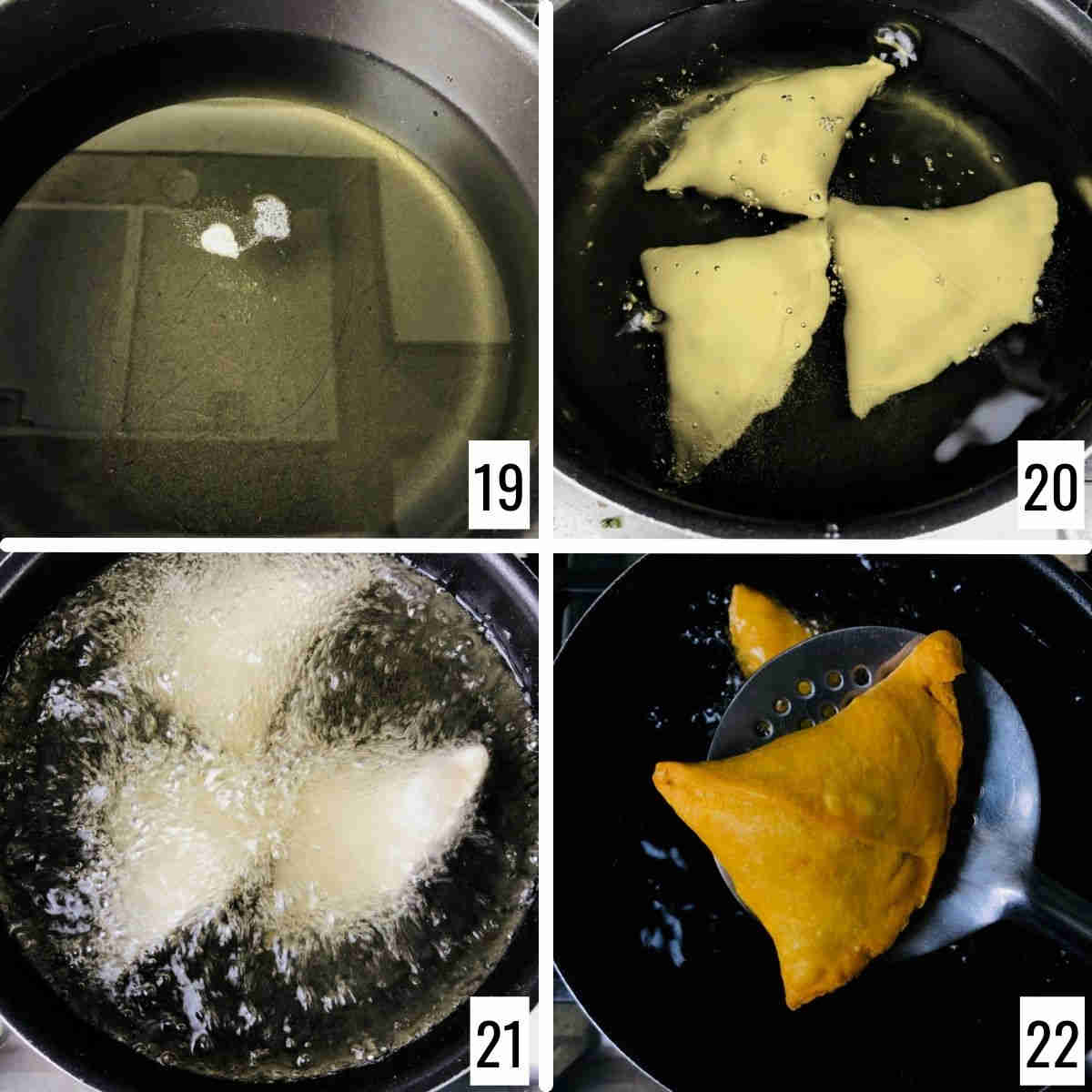
Step 12: Heat oil and check if it is ready (image 19). Deep fry in batches on low heat. Do not flip them for the first 5-6 minutes (images 20 and 21).
Step 13: Once they begin to firm up, increase the heat to medium and carefully flip them (image 22).
Air fryer samosa recipe
Samosas are traditionally deep-fried; however, they can be baked or air-fried too. To air fry them, follow this recipe until shaping. To air fry, preheat the
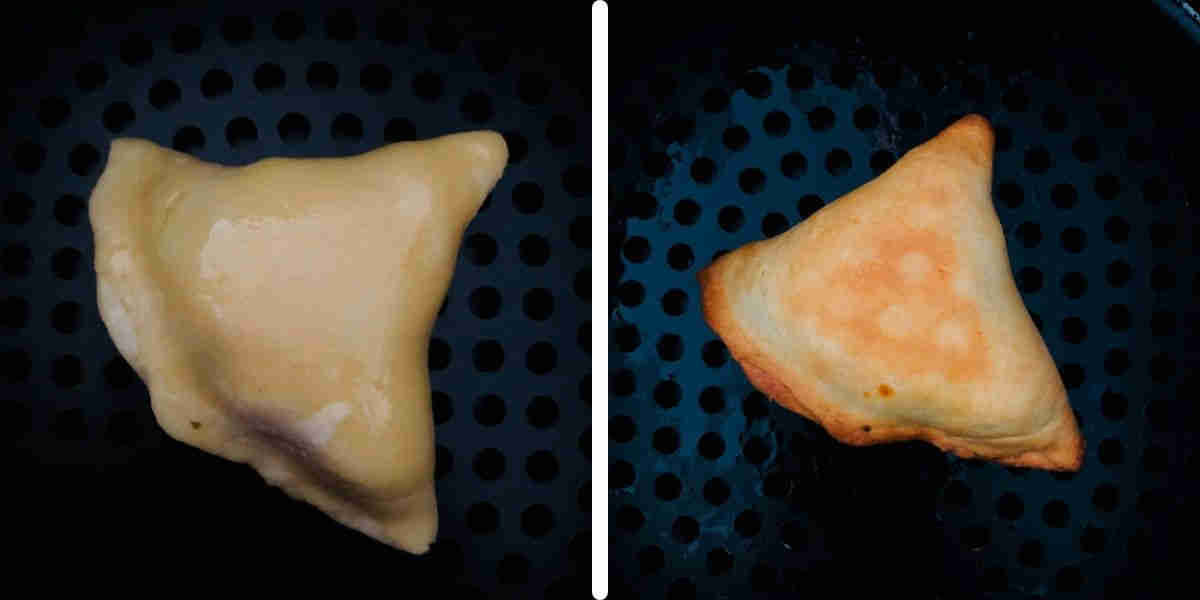
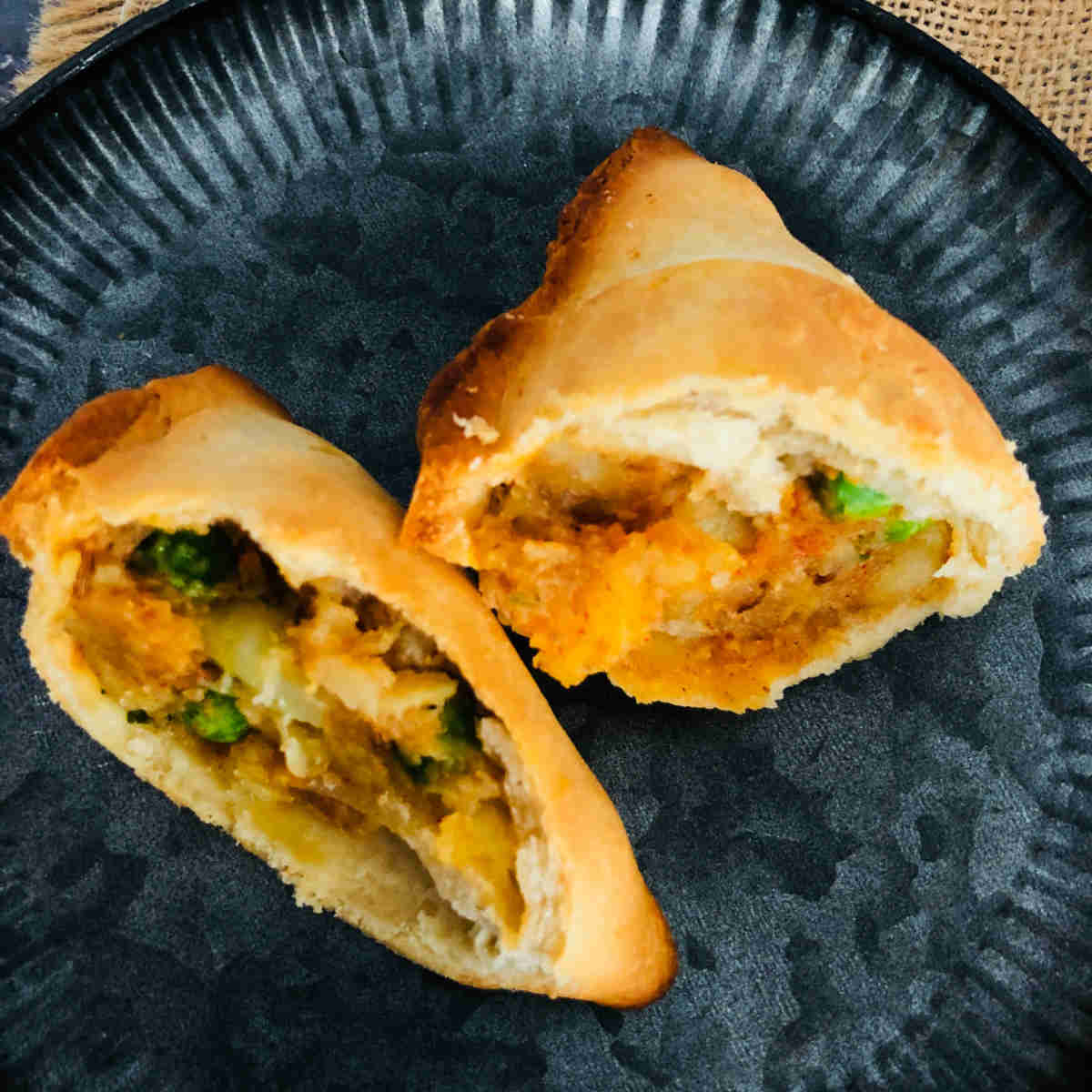
Expert Tips
For 2 cups of flour, I use around ¼ cup of ghee and just under ½ cup of water. These measurements are perfect for getting crispy and flaky samosa. For this dough, 500 grams of potato is sufficient to make the filling. This recipe makes 12 samosas.
Maintain a balanced amount of ghee or oil in the dough to achieve the right texture. Too little fat results in dry and hard samosas, while excessive fat may lead to cracks in the crust. Aim for a dough with approximately 10-12% fat for a perfect, flaky texture.
Thoroughly combine the flour and fat by rubbing them together for about 4-5 minutes. It's a crucial step often overlooked. When the mixture clumps together without falling apart when pressed, it's ready to add water.
Do not knead the dough too much. Bring it together and gently knead for just 1-2 minutes.
Ensure the oil isn't too hot. Test it with a small piece of dough - it should rise slowly, not quickly. Add the samosas, and don't flip them for 5-6 minutes. Afterward, increase the heat to medium, and each batch should take 8-10 minutes to fry. Once a batch of samosa is fried, let the oil cool down slightly before adding the next batch.
Recipe FAQs
If the dough is soft, it will affect the crispiness of the crust. Also, the temperature of the oil is important. If the oil is not hot enough or too hot, it will make the samosas soggy.
Soft dough results in oily samosas. Add water in small batches when making the dough and make a stiff dough. See the measurements above.
Not adding enough ghee or oil to the dough will make the crust hard. Also, if you knead the dough too much, it will make the crust hard.
Frying them in very hot oil gives them bubbles on the crust.
Yes. You shape them and freeze them before frying them. You can also fry them and then freeze them. To reheat them, microwave them for one minute and then place them in the oven or
While atta can be used, it may not make the crust dense and less flaky. All-purpose flour (maida) gives a flaky and crispy crust. If you want to replace it with atta (whole wheat flour), use 1:1 atta and maida.
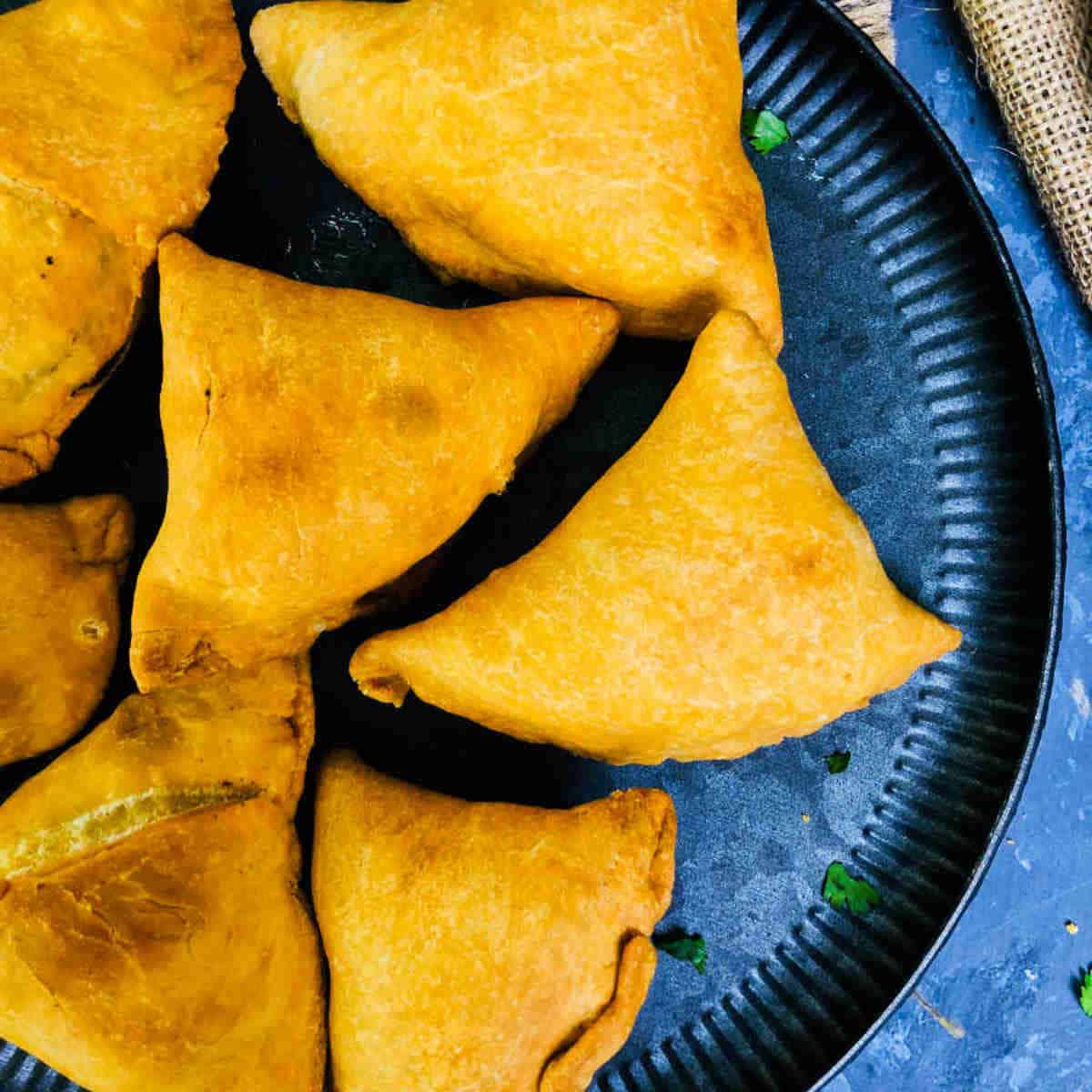
More snacks with potatoes
If you tried this Homemade Samosa Recipe or any other recipe on my website, please leave a ? star rating and let me know how it went in the ? comments below.
Recipe card
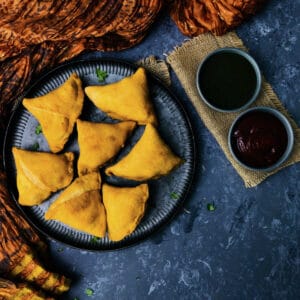
Homemade Samosa
Ingredients
For the dough:
- 2 cups all-purpose flour (maida)
- ½ teaspoon salt
- ¼ cup ghee or oil (use store-bought or homemade ghee)
- ¼-½ cup water
For the filling:
- 4 large potatoes (1 lb)
- ½ cup peas
- 2 tablespoon oil
- 1 teaspoon cumin seeds
- ½ teaspoon fennel seeds
- 1 tablespoon ginger grated
- 1-2 green chili (or serrano pepper) finely chopped, adjust as per taste
- 1 teaspoon ground coriander
- ¾ teaspoon chili powder (or cayenne)
- 1 teaspoon garam masala (use store-bought or homemade garam masala)
- 1 teaspoon amchur dry mango powder
- Salt to taste
- 2 tablespoon cilantro
Oil for deep frying
Instructions
Knead the dough:
- Take flour and salt in a large bowl. Mix well.
- Add ghee or oil and mix well. Rub the ghee and flour together well for 3-5 minutes.
- Incorporate the ghee and flour very well. To check if it is done, take some dough and press it in your fist. It should hold together without falling apart.
- Slowly add water and knead into a stiff dough. Do not overmix the dough.
- Cover with a damp cloth and let it rest for 30 minutes.
Make the filling:
- Boil the potatoes until they are just done. Peel the skin and mash them lightly. Set them aside.
- Heat 2 tablespoons of oil in a frying pan or kadhai. Add cumin seeds and fennel seeds.
- Once it splutters, add ginger and green chili. Saute for a few seconds.
- Add the mashed potatoes and peas.
- Add the ground coriander, chili powder, garam masala, amchur, and salt. Mix well.
- Turn off the heat and add cilantro. Mix well and let the mixture cool down.
Shape the samosa:
- Once the dough is rested, gently knead it again.
- Divide it into six parts.
- Lightly grease the rolling surface with some oil and roll the dough into a slightly thick disc (approximately 8 inches).
- Cut it into two parts making a semi-circle.
- Take one part and apply water at the straight edge. Bring the two corners together to form a cone (see step-by-step pictures).
- Add approximately 2-3 tablespoons of filling to the cone. Press it lightly.
- Apply water to the edges and seal them.
- Repeat with the rest of the dough and filling. Keep the samosa under a damp kitchen towel to make sure they do not dry out.
Fry the samosa:
- Heat oil in a heavy bottom pan for deep frying.
- The oil should be medium hot. To check if the oil is ready, drop a small piece of dough in the oil. If it slowly rises up, the oil is ready (see tips above).
- Deep fry the samosa in batches on low heat. Do not flip them for the first 5-6 minutes. Once they begin to firm, increase the heat to medium and carefully flip the samosa (see tips above).
- Fry until the samosa is golden brown (it will take approximately 8-10 minutes).
- Take the samosa out and drain it on a paper towel.
- Serve hot.


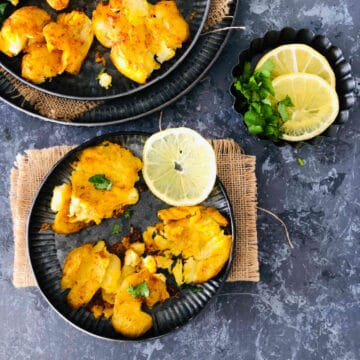
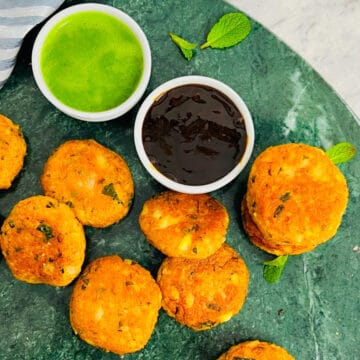
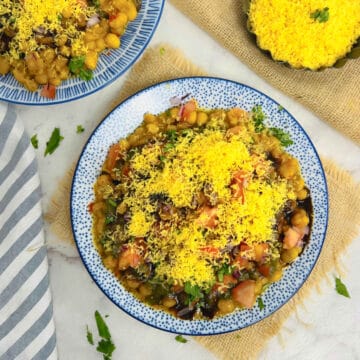
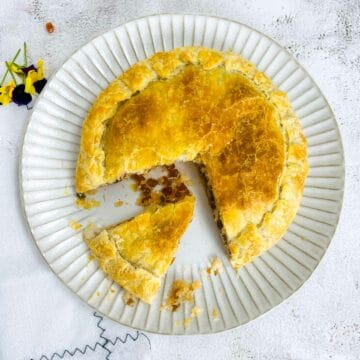
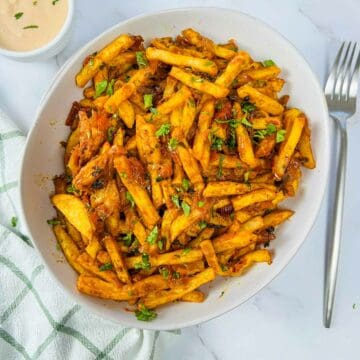
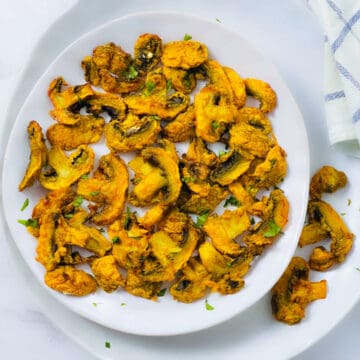
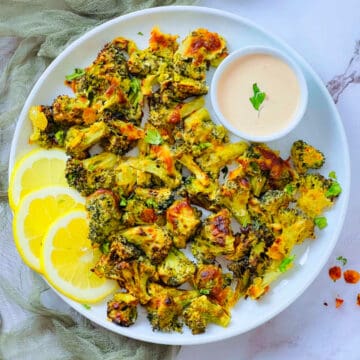
Cpg says
Beautiful spice in these Samosas. Delicious